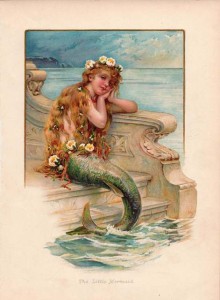grown-up fairy tales
We all know ‘Once upon a time’, and we grew up with ‘happily ever after,’ even if the whole Prince Charming thing fell flat in later life. Fairy tales can be comfort food, the stuff of escapism and dress-up. What we may not be so accustomed to is fairy tales’ dark side.
Their magic can be deeply unsettling. And they certainly don’t all have happy endings, as I learned as a child, curled up with my mother’s copy of a Grimm Brothers collection one stormy night. I’ll just say that the mermaid doesn’t make it, and I didn’t sleep much that night. Fairy tales can spook at the same time as they sparkle.
And when women write and rewrite these familiar stories, the deep roots of misogyny and the silenced mysteries of girlhood surface. This makes sense, given the history. Before fairy tales were rewritten to be cheerful, sparkly, child-friendly, and above all profit-turning, they rather overflowed with death, rape, incest, faeces, menstrual blood, pregnancy, dismemberment, murder, and other earthy and violent elements.
Women and girls were present in the flesh, and very often victimized (that is, when they weren’t busy being demonized). In various earlier versions, for example, Cinderella’s stepsister chops off her toe to shove it into the coveted glass slipper; Sleeping Beauty is raped while unconscious and later gives birth to twins; Snow White’s mother (not stepmother) is forced to dance herself to death in hot iron shoes, and Little Red Riding Hood eats her own grandmother bit by bit before being devoured herself. In this tradition, women writers and readers find a rich yet disturbing storytelling inheritance.
As long ago as Christina Rossetti’s haunting poem Goblin Market (1862), women writers have used fairy tale to explore voicelessness, self-sacrifice, desire, violence, love, and power. In Rosetti’s rhyming tale, goblins tempt maidens with their exotic fruits, but the intense pleasure of consuming those fruits (‘She suck’d and suck’d and suck’d the more / Fruits which that unknown orchard bore; / She suck’d until her lips were sore’) renders one listless and insatiable.
Over a century later, Angela Carter would return to traditional fairy tales and folk tales in her disturbing short story collections The Bloody Chamberand Saints and Strangers(1979 and 1985), reinserting all the gore, power struggles, sex, and sexual violence.
More recently, Susanna Clarke’s enchanting fantasy novel Jonathan Strange and Mr. Norrell (2004) draws heavily on the English fairy tale tradition and also dramatizes the silencing of women—both in nineteenth-century British culture (the female characters are powerful and intelligent but often blown off by their male counterparts) and in the less literal element of Faerie (the lovely Miss Wintertowne is enchanted so that she must dance all night at fairy balls but speaks only gibberish when she attempts to get help or tell her truth).
A deservedly well-known work, Jonathan Strange echoes a lesser-known but absolutely must-read novel in this tradition: Hope Mirrlees’s 1926 fantasy Lud-in-the-Mist, itself heavy with echoes of Goblin Market and that luscious fairy fruit. Reading in the fairy tale tradition, we encounter forgotten women writers as well as misunderstood and maligned women characters.
These and other modern fairy tales illuminate the huge impact of old stories and character types—the witch, the maiden, the good wife, the wicked stepmother—on how we understand and live in the world today. This exploration is not limited to women writers, either: men including Terry Pratchett (especially in his excellent and hilarious Witches Abroad) and Neil Gaiman (in Stardust, for instance, another work that draws on Lud-in-the-Mist) trace similar themes with care and intelligence. Movies like Disney’s recent Maleficent pull at these threads, too.
Fairy tales participate in a very old oral tradition, rearranging the pieces and lulling us with their storytime rhythms. They can sell the Beautiful Princess dream and mass quantities of sexist children’s merchandise. And in their crudest forms, and in modern retelling, are an instrument of expressing female oppression.



Great article. I think editing takes a large part – we’ve been given the fairy tales that have been edited, anthologised and translated in certain ways that favour stories of ‘stay in your place’. The ones that are commonly known today – absolutely are instruments of female oppression, and the Disney-type versions we’ve been raised on are insidious.
However, there are MANY excellent feminist and female-centric fairy tales with true heroines, from all different cultures. They’ve just been omitted from what is readily available, which is a tragedy. You can find some of them here: https://m.facebook.com/amightygirl/photos/a.360833590619627.72897.316489315054055/676004122435904/?type=1
I’m currently reading http://www.amightygirl.com/fearless-girls
And loving it.
I’m obsessed with folk tales – I’ve read probably hundreds of collections, and this one is fast becoming my favourite.
Ragan’s careful selection and keeping her daughters as her touchstone is a delight. Her introduction is so wonderful, too.